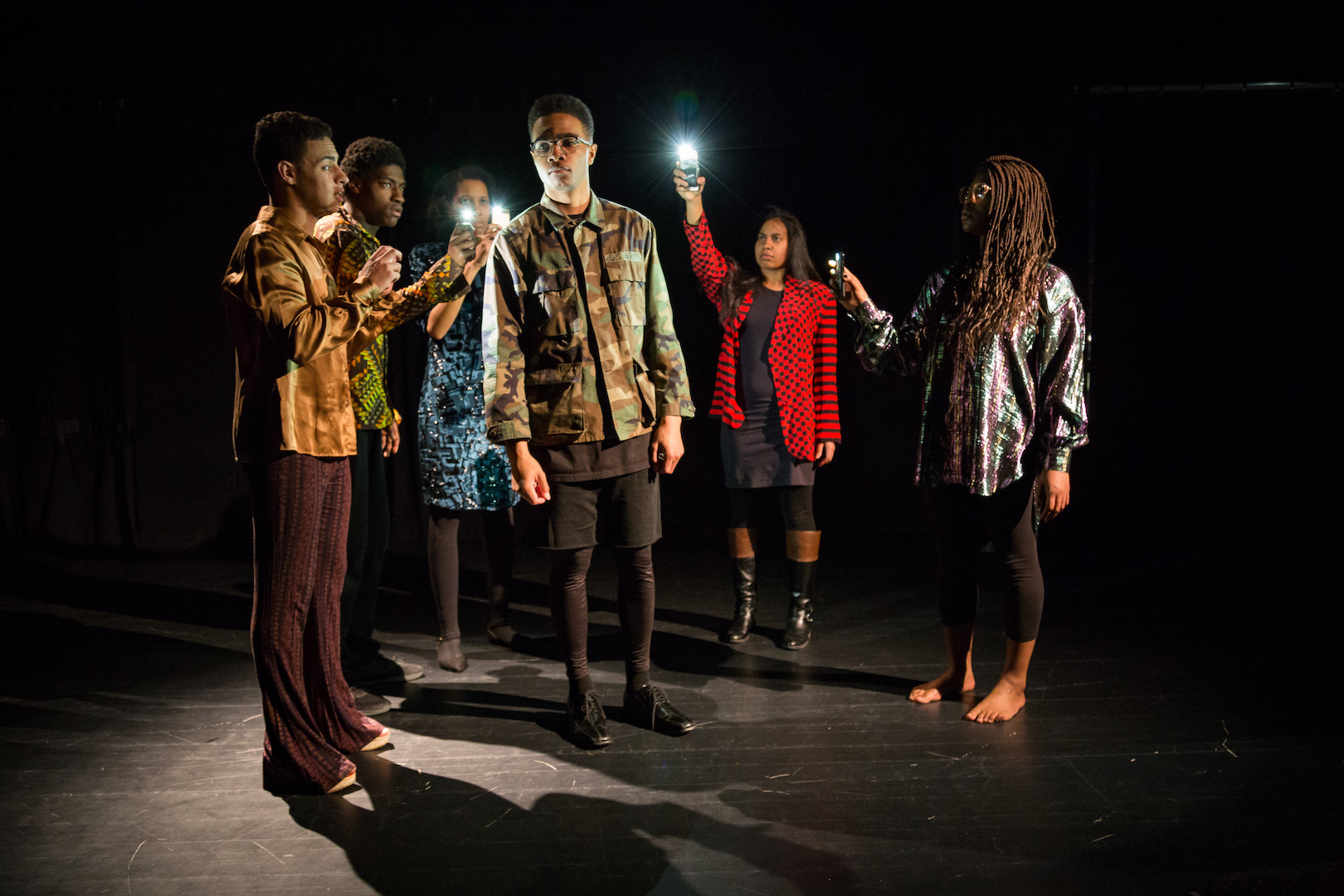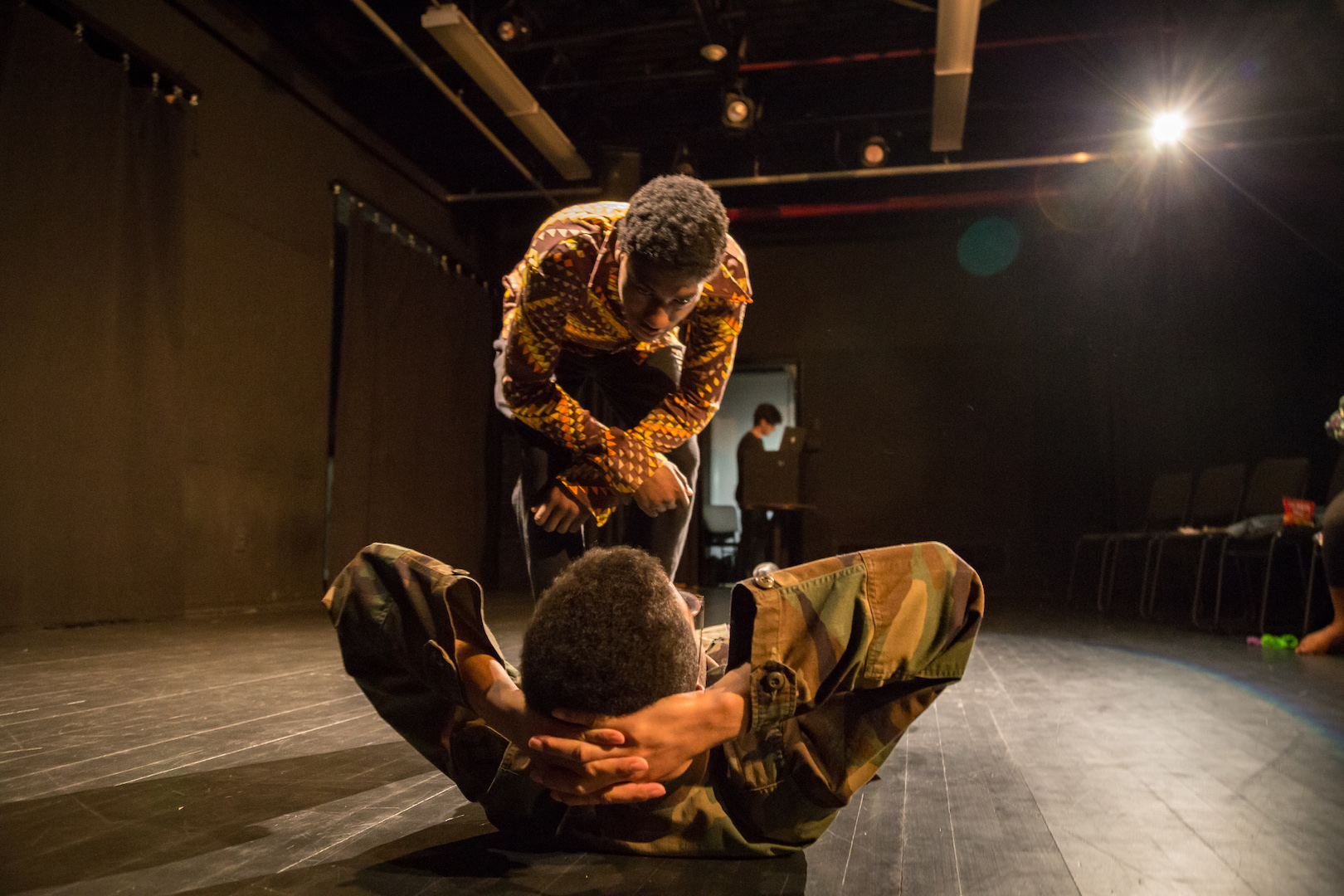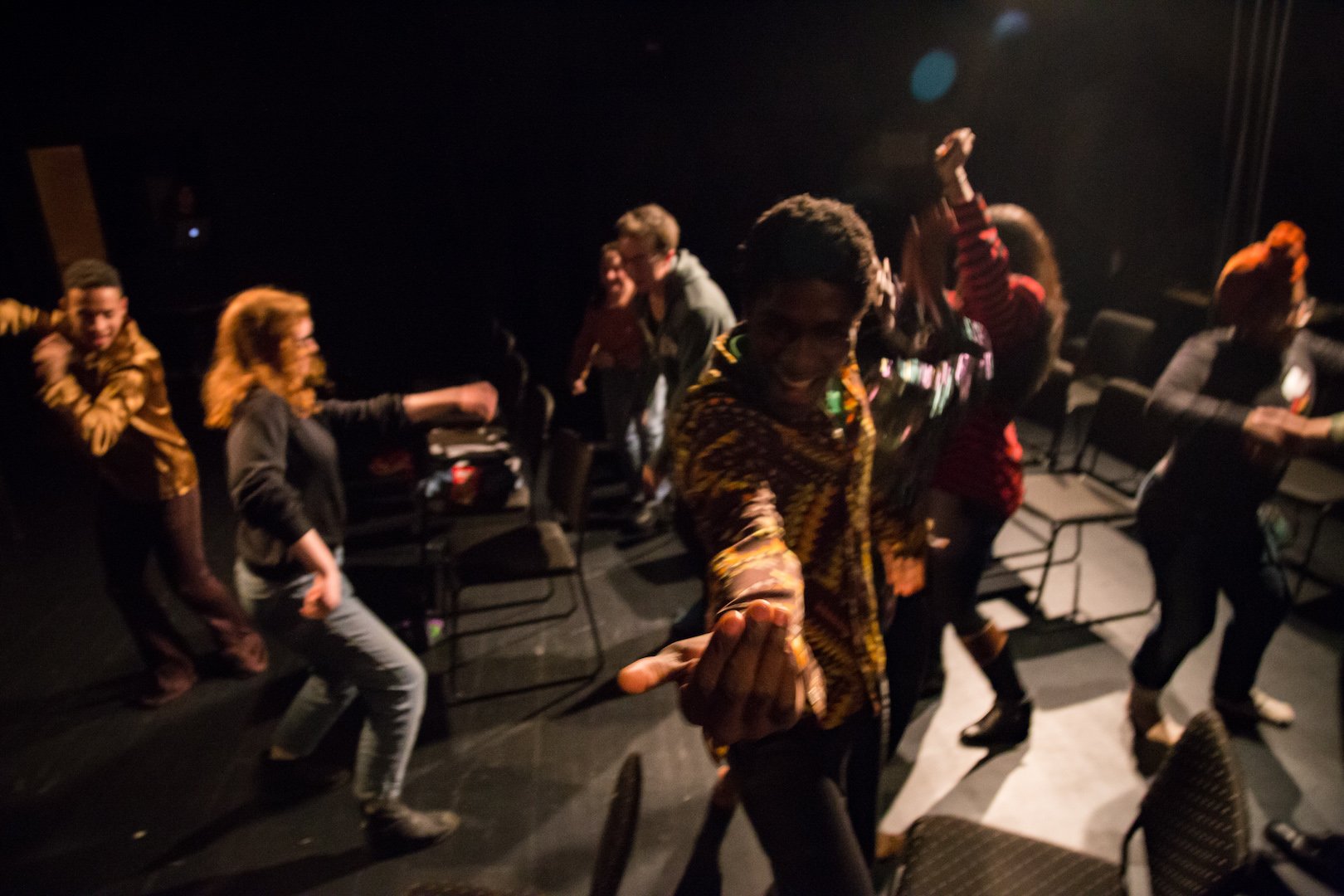
Photo: Max Helburn ’18
By Philip Merrick
“Welcome aboard the Celebrity Slaveship,” says Jamin Garcia ’20, standing center stage in Studio A and speaking directly to the audience. Two actors (Bri Watts ’20 and Jordan Alvarez ’20) stand behind her holding their cell phones, flashlight mode on, moving in place as she speaks: “I’m Miss Pat and I’ll be serving you here in Cabin A. We will be crossing the Atlantic at an altitude that’s pretty high, so you must wear your shackles at all times…”
She demonstrates how to put our shackles on, then continues with her instructions: “Of course, no drums are allowed on board. Can you repeat after me: No drums.” We hesitantly call out back to her. “With a little more enthusiasm, please,” she responds. We repeat, more loudly this time: “No drums!”
Suddenly, the ship tilts and we are thrown off-balance. “We’re just caught in a little time warp,” Garcia assures us, and as we careen back and forth, she gives us a crash-course in African-American history, from the American Revolution to the Supremes breaking up. Actors emerge from the audience and join the confusion, and we’re off, all of us, on this weird and wacky journey that centers around what it’s like to live as a person of color in America.

Photo: Max Helburn ’18
Thus begins Saturday’s performance of The Colored Museum by George C. Wolfe, directed by Grant Landau-Williams ’19 and stage managed by Max Clifford ’21. Or at least, that’s the beginning of the play. The audience experience begins with a wall of photographs and art by Skidmore students and others, marked “Inspiration” with a handwritten scrawl, meant to inspire both the audience members and the theater artists in the room. Above the stage is a mock proscenium arch made by Iona Herriott ’20. It sports the faces of comedy and tragedy, plus paper cutouts in the shape of hands, some of which are making finger-guns. Director Landau-Williams stands under this banner to deliver a pre-show address. He tells us that some of the the pieces on the wall belong to a genre called afrofuturism. “My hope is that the show invites you to challenge the way you see art, the way you see life, maybe offer some new perspectives,” he says. “Part of our goal is to change the canon, as afrofuturism does. It challenges what counts as art and what we think of as art.”
Afrofuturism is a growing genre that puts a sci-fi twist on African culture and aesthetics (think Black Panther). While the play was not explicitly written in an afrofuturistic style, it fits firmly into the canon. Black history and culture is put onstage alongside time warps and extraterrestrials, somehow simultaneously looking toward the past and the future.

Photo: Max Helburn ’18
The play takes the form of a collection of scenes–exhibits, if you will–that paint a picture of life as a person of color in America. We hear Dante Haughton ’19 whisper secrets just for us, witness two hairpieces (Olivia Irby ’18 and Garcia) argue over who gets to be worn today, and meet Miss Roj (Alvarez), a drag queen who claims to be from outer space. The play ends with a party led by Irby in which audience members from the packed house are encouraged to get up and dance.

Photo: Max Helburn ’18
It’s not uncommon for Studio Labs to sell out due to the small audience size, but this production was exceptionally well-attended. All three shows sold out within 24 hours of tickets being released; extra seats were added twice in order to placate the high demand. What made this lab so successful?
I think it’s that every component of this production was built around amplifying the voices of people of color at Skidmore. The production did not attempt to hide or disguise the performative nature of the piece or the performers themselves. The mock proscenium arch highlighted the fact that this was a play and the minimalist set and props shifted focus to the actors themselves; the people in this story mattered more than anything else. The actors maintained a sense of urgency and high energy throughout the piece, conveying a pressing need to tell the stories that speak to their own experiences. Yet, I never felt excluded from this narrative; in fact, I felt welcomed. The play was a serious critique of American culture, but at the same time it was a party to which everyone held an invitation. Landau-Williams certainly achieved his goal of inviting us to challenge the way we see art and life and I am excited to see what this inspires going forward.
PHOTO GALLERY
PRODUCTION CREDITS
By: George C. Wolfe
Director: Grant Landau-Williams ’19
Stage Manager: Max Clifford ’21
Cast: Sadiq Ahmed ’20, Jordan Alvarez ’20, Jamin Garcia ’20, Dante Haughton ’19, Olivia Irby ’18, Bri Watts ’19
***
Philip Merrick ’19 is a Theater major and Staff Writer for the Living Newsletter










